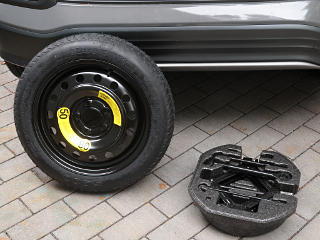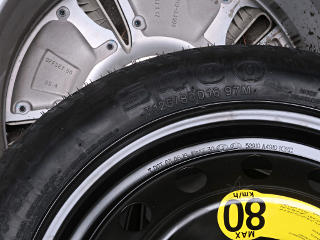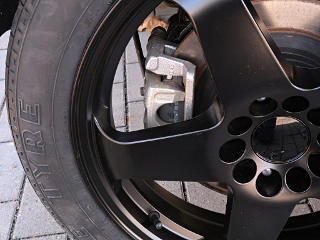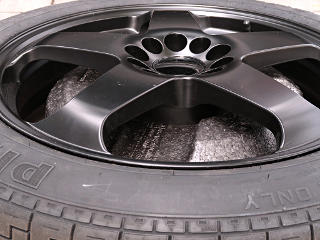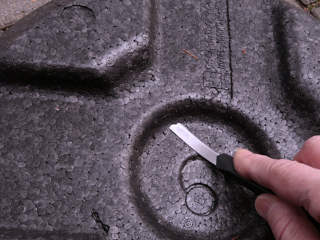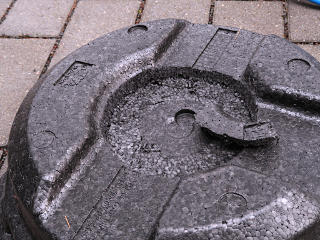| |
The parts guys at the dealership seemed concerned that they hadn't really
gotten me a satisfactory kit, and made a token effort to find me one with
a real 17" rim, but evidently such was simply not to be had in a steel-rim
compact spare type.
Another option would be to simply carry a fifth full-size wheel around,
which I used to do years ago in the Trooper, either taking up space inside
or mounted on the external rear door bracket when needed.
That would be a pain in the ass with this car, so no.
More looking around suggested that the Kona EV
variant sold in India
might have a real "emergency spare tyre", but good luck finding one of those
in the US.
Some of the people on various forums suggested that a Honda wheel with a
17" rim and the same bolt pattern might fit, but at 6.5 inches wide would
likely not come close to fitting in the storage well.
There had to be *some* option for a thin-profile tire that could fit on
a 17" rim, and/or basically put something together from parts.
In the meantime I had my klunky solution on deck, along with a
string-plug kit
which I bought a couple of after seeing how easily the guy at the tire
shop fixed my
screw problem
with one.
I figured that if I could "plug and go" for a minor puncture it might be
the fastest solution, even if it still meant taking a wheel off for a few
minutes to facilitate the operation, and evidence supports that a properly
vulcanized string plug is more "permanent" than many people believe.
A few months later, the "aha" moment finally arrived.
In cruising more online wheel-and-tire lore I happened to run across a
company called "Modern Spare", whose mission seems to be providing real
spare tires for the many newer cars that don't come with their own,
particularly Teslas.
They make their own custom rims and fit them with narrow but robust tires
that hold up better that typical donuts over some distance if necessary.
While their compatibility list didn't include the Kona EV, it seemed possible
that they if anyone would be able to put together something workable on a rim
that would fit both ends of the car, so I contacted them to discuss.
It turned out that they had just been researching the Kona and other
Hyundai/Kia vehicles, and ironically, a slight modification of their
Model 3 kit
was the starting baseline.
They instructed me how to enter an order and make sure to specify that it
was for a Kona and not a Tesla, and I went for it.
A few days later the wheel showed up, and it was time to do the whole
fitment dance over again.
I promised to document the whole process for them carefully, as it would
help them refine the offering.
|
